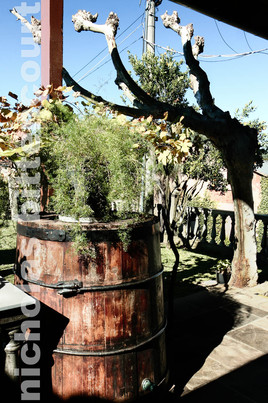Brazil Wine Regions

Serra Gaúcha
• Land marked by family viticulture in small properties with the largest and most important area (over 8,000 ha).
• Accounts for nearly 90% of Brazilian wine production.
• Located at parallel 29° with average temperature between 12°C (winter) and 22°C (summer).
• Includes sub-regions “Vale dos Vinhedos” (1st “Brazilian Geographical Indication” and the second Non-European country recognized by WTC). Click here for more information aboutVALE DOS VINHEDOS ORIGIN INDICATION.
• Fresh aromas with well-balanced maturation between sugar and acidity.
• Main varieties: Red: Cabernet Sauvignon, Merlot, Cabernet Franc, Tannat, Ancellota and Pinot Noir, White: Riesling Itálico, Chardonnay, Proseco, Moscatos and Malvasias.
Campanha and Serra do Sudeste
• Plains and gently rolling hills at the southern Brazilian border, parallel31°.
• Average temperature between 12°C(winter) and 24°C (summer), moderate climate with dry summers.
• Long days and wide variation in temperature between day andnight benefit the cultivation of grapes.
• Low fertility of the soil favor a balanced ripeness of the grapes, with a high degree of sugar, aroma, polyphenols.
• Newest area for grape growing and winemaking (2,400 ha).• Main varieties: Red: Cabernet Sauvignon, Merlot, Tannat, Touriga Nacional, Tinta Roriz, Alfrocheiro and Arinarnoua. White: Sauvignon Blanc, Chardonnay, Pinot Grigio, Gewurztraminer and others.
São Joaquim & Vale Rio Peixe
• High Altitude, between 900m and 1,400m;
• Low average temperature (winter 9.4 °C, summer 21.7 °C).
• The accumulation of substances such as polyphenols, also contribute to finding a superior wine with flavor, color and body.
• The low temperatures influence the timing of the harvest taking place later, between March and April.
• Main varieties: Red: Cabernet Sauvignon, Merlot and Pinot Noir. White: Sauvignon Blanc and Chardonnay.
São Francisco Valley
• Biggest tropical vineyard in the world, at latitude 9° south.
• Flat plains and extremely dry climate, where grape growing is only possible through artificial irrigation.
• Average temperatures between 20°C (winter) and 31°C (summer).
• 2 harvests per year.
• Alkaline soil with low yields, produce high quality, healthy grapes and unique wines.
• The dry climate and sunshine help to produce grapes with a high level of sugar, that means very fruity wines.
• Main varieties: Red: Syrah, Aragonez, Cabernet Sauvignon and others. White: Chardonnay, Chenin Blanc, Malvasia Bianca, Muscat and others.
Brazilian Wine Style
• Fresh and fruity wines;
• Moderate alcohol content;
• Irrigation is not necessary (except São Francisco Valley);
• Diversity: Grape growing is present in 9 different states and 1,162 wineries;
• Small properties (about 2ha per family);
• Hand made harvest;
• Modern technology applied in the viticulture and winemaking process.
• Land marked by family viticulture in small properties with the largest and most important area (over 8,000 ha).
• Accounts for nearly 90% of Brazilian wine production.
• Located at parallel 29° with average temperature between 12°C (winter) and 22°C (summer).
• Includes sub-regions “Vale dos Vinhedos” (1st “Brazilian Geographical Indication” and the second Non-European country recognized by WTC). Click here for more information aboutVALE DOS VINHEDOS ORIGIN INDICATION.
• Fresh aromas with well-balanced maturation between sugar and acidity.
• Main varieties: Red: Cabernet Sauvignon, Merlot, Cabernet Franc, Tannat, Ancellota and Pinot Noir, White: Riesling Itálico, Chardonnay, Proseco, Moscatos and Malvasias.
Campanha and Serra do Sudeste
• Plains and gently rolling hills at the southern Brazilian border, parallel31°.
• Average temperature between 12°C(winter) and 24°C (summer), moderate climate with dry summers.
• Long days and wide variation in temperature between day andnight benefit the cultivation of grapes.
• Low fertility of the soil favor a balanced ripeness of the grapes, with a high degree of sugar, aroma, polyphenols.
• Newest area for grape growing and winemaking (2,400 ha).• Main varieties: Red: Cabernet Sauvignon, Merlot, Tannat, Touriga Nacional, Tinta Roriz, Alfrocheiro and Arinarnoua. White: Sauvignon Blanc, Chardonnay, Pinot Grigio, Gewurztraminer and others.
São Joaquim & Vale Rio Peixe
• High Altitude, between 900m and 1,400m;
• Low average temperature (winter 9.4 °C, summer 21.7 °C).
• The accumulation of substances such as polyphenols, also contribute to finding a superior wine with flavor, color and body.
• The low temperatures influence the timing of the harvest taking place later, between March and April.
• Main varieties: Red: Cabernet Sauvignon, Merlot and Pinot Noir. White: Sauvignon Blanc and Chardonnay.
São Francisco Valley
• Biggest tropical vineyard in the world, at latitude 9° south.
• Flat plains and extremely dry climate, where grape growing is only possible through artificial irrigation.
• Average temperatures between 20°C (winter) and 31°C (summer).
• 2 harvests per year.
• Alkaline soil with low yields, produce high quality, healthy grapes and unique wines.
• The dry climate and sunshine help to produce grapes with a high level of sugar, that means very fruity wines.
• Main varieties: Red: Syrah, Aragonez, Cabernet Sauvignon and others. White: Chardonnay, Chenin Blanc, Malvasia Bianca, Muscat and others.
Brazilian Wine Style
• Fresh and fruity wines;
• Moderate alcohol content;
• Irrigation is not necessary (except São Francisco Valley);
• Diversity: Grape growing is present in 9 different states and 1,162 wineries;
• Small properties (about 2ha per family);
• Hand made harvest;
• Modern technology applied in the viticulture and winemaking process.
